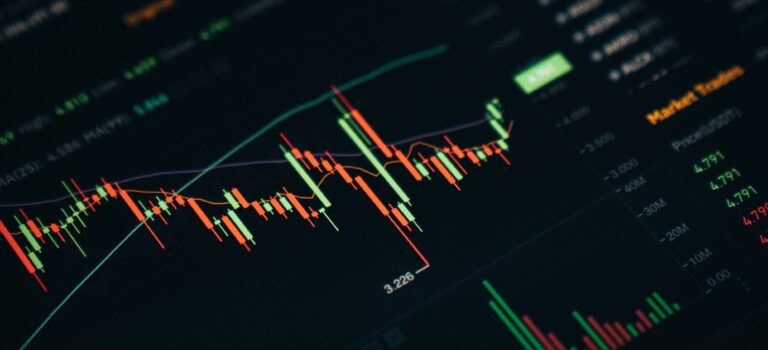The Investor Guide to Vanguard Funds for July is AVAILABLE NOW! Links to the July data files are posted below. Market Perspective: Growth Slows as Inflation Remains Elevated The Nasdaq gained 2.60 […]


The Investor Guide to Vanguard Funds for July is AVAILABLE NOW! Links to the July data files are posted below. Market Perspective: Growth Slows as Inflation Remains Elevated The Nasdaq gained 2.60 […]
Click Here to view today’s Global Momentum Guide WEEKLY SECTOR MOVERS The Dow Jones Industrial Average declined 0.16 percent last week, the S&P 500 Index 0.93 percent, the Russell […]

The main news was the release of the consumer price index (CPI), which was higher than expected. The stock market reacted to the bad news, but not as much as some feared. Most are taking this as a sign that the markets are pricing in more interest rate increases and a slowing economy.
The major market indexes closed lower on Wednesday after the CPI was released. The Dow Jones Industrial Average closed down 0.7 percent, the S&P 500 fell 0.5 percent, and the Nasdaq Composite closed slightly lower by 0.2 percent.
A stronger-than-expected retail sales report helped the markets rally on Friday, with the Dow gaining 2.15 percent, the S&P 500 rising 1.92 percent, and the Nasdaq up by 1.79 percent.
Friday’s rally wasn’t enough to keep the major market indexes from closing slightly lower for the week. The Dow ended the week off by 0.2 percent, S&P 500 was down 0.9 percent, and the Nasdaq closed down 1.6 percent.
All three indexes remain negative for the year, with the Dow lower by 13.9 percent, the S&P 500 down 18.9 percent, and the Nasdaq down 23.6 percent.
As if consumers didn’t already know, prices soared by 9.1 percent from a year ago, more than the expected 8.8 percent estimate. That makes it the fastest inflation increase since November 1981. On a monthly basis, the consumer price index (CPI) rose 1.3 percent from the previous month.
Taking out the more volatile food and energy prices, the core CPI increased 5.9 percent compared to a year ago and increased 0.7 percent from the previous month. Both numbers were above estimates.
Core inflation peaked last March at 6.5 percent and has been edging down ever since. These numbers appear to show that inflation may have peaked.
But as other economists are pointing out, the rise in prices is increasing across a broader range of products. The increase was led by the spike in energy and food prices, which has been a global problem. But prices are also rising in domestic goods and services like shelter, autos, and clothing.
Energy prices again led the way with an increase of 7.5 percent for the month and up 41.6 percent on a 12-month basis. Food increased by 1 percent, shelter costs increased by 0.6 percent overall, but the cost of rentals was up by 0.8 percent, the largest monthly increase since April 1986. Shelter costs make up about one-third of the CPI.
A good portion of the inflation increase is from gasoline prices, which rose 11.2 percent for the month and almost 60 percent for the 12-month period. Electricity costs increased by 1.7 percent for the month and 13.7 percent for the 12-month period. Gasoline, which was over $5 per gallon, has fallen to a national average of $4.58.
Overall, medical costs increased by 0.7 percent for the month, driven by a 1.9 percent increase in dental services, which is the largest monthly increase for that sector going back to 1995.
Commodities are starting to cool off, another sign that inflation has peaked. Oil dropped 7.1 percent for the week but is still higher by 29.4 percent for the year. Oil is down 22 percent from its peak high, natural gas down 28 percent, copper down 34 percent, wheat is down 44 percent, and lumber is down 62 percent from its peak price.
The yield curve inverted when the 2-year Treasury jumped to 3.13 percent, while the 10-year Treasury fell to 2.91 percent. The inversion between the two is at the widest level since 2000. Many economists believe that a yield curve inversion signals an upcoming recession.
The economy continues to be robust, and consumer spending is holding up. Retail sales for June were up 1 percent, better than the estimated gain of 0.9 percent. The increase is a turnaround from the decline of 1 percent in retail sales for May.
The housing market is showing signs of cooling off as more Americans canceled their agreements to buy an existing home. Out of all the homes under contract, 15 percent of the contracts were canceled. In comparison, a year ago, the rate was about 11 percent. Homebuilders are also seeing a cancellation rate of about 9.3 percent, compared to 6.6 percent a year ago.
The jump in cancellations could be caused by higher mortgage rates and rising inflation as potential homebuyers are reconsidering buying a home at this time. The average rate on the 30-year fixed mortgage is at 5.51 percent, up 21 basis points last week and up 2.63 percent from last year.
The labor market remained tight even though the number of new claims for unemployment benefits increased by 9,000 to 244,000, the highest it’s been since November 2021.
JP Morgan reported earnings last week, which caused its stock to fall almost 5 percent on Thursday, hitting a new 52-week low for the bank. Earnings per share came in at $2.76 versus an expected $2.88. Revenue was slightly below estimates at $31.63 billion. They also announced they have suspended share buybacks.
Citigroup beat expectations last week when they posted earnings of $2.19 per share versus an expected $1.68. Revenue was $19.64 billion vs. $18.22 billion expected. After the earnings announcement, the shares jumped 13 percent.
Click Here to view today’s Global Momentum Guide WEEKLY SECTOR MOVERS The Nasdaq increased 4.56 percent last week, the Russell 2000 Index 2.41 percent, the S&P 500 Index 1.94 […]

The major market indexes were up for the week, helped by a strong jobs report. The S&P 500 gained 2 percent, and the Dow Jones Industrial Average was up almost 1 percent. The Nasdaq gained 4.6 percent for the week and has closed five straight days in the green for the first time this year.
For the year, the markets are still down. The Dow is down 13.8 percent, the S&P 500 is lower by 18.2 percent, and the Nasdaq is down 25.6 percent
The jobs report for June was released on Friday, showing an increase of 372,000 jobs. The better-than-expected report calmed fears that a recession had either already begun or was about to begin. The unemployment rate stands at 3.6 percent, which is a figure that is not consistent with an economic downturn.
There has been a great deal of talk that we are already in a recession, which will be proven right or wrong when the second-quarter GDP is released later this month. But four months in a row of nearly 400,000 job growth is making some feel we will avoid two consecutive negative GDP reports.
The economy will be put to the test in the coming months with continuing high inflation and an almost certainty that the Federal Reserve will raise rates several more times this year.
The first quarter GDP shrank by 1.6 percent, and the latest from the Atlanta Federal Reserve’s GDPNow tracker believes that the second quarter will show another contraction of 1.2 percent. Most economists define a recession as two consecutive negative GDP reports.
Initial unemployment benefits filings reported on Thursday showed an increase of 4,000 from the previous period at 235,000. The total is the highest since January 15. The four-week moving average increased to 232,500, its highest level since December 2021.
More concerning is the planned layoffs figure. According to the job placement firm Challenger, Gray & Christmas, planned layoffs jumped to 32,517 in June and the highest total since February 2021.
The auto sector reported a 155 percent increase in layoffs compared with the same period last year. The real estate sector also reported a high number of layoffs. The job placement firm said ten industries have already announced more layoffs this year than in 2021 out of the 30 industries they follow.
Also noted in the job report was that the average hourly earnings increased just 0.3 percent, which could be another sign that inflation is slowing. For the year, average hourly earnings are up 5.1 percent on a 12-month basis.
The yield curve inverted last Tuesday for the second time this year when the 2-year U.S. Treasury yield rose above the 10-year Treasury yield. An inverted yield curve is an indicator of a possible recession. The last time the yield curve inverted was last April. As of the close on Friday, the yield curve remains inverted.
Oil prices fell below $100 per barrel last week for the first time since early May. If a recession occurs, the belief is that there will be a drop in demand for oil. But the drop below $100 didn’t last long as West Texas Intermediate closed Friday at $104.80.
Recession worries also caused the 30-year fixed mortgage rates to drop again last week. Over the past two weeks, mortgage rates have dropped by half a percent. The 0.5-point drop only provides minor relief to potential homebuyers as home prices remain high.
Housing should continue to normalize if price growth slows due to a lack of buyers, an economic slowdown and an increasing housing supply. According to Freddie Mac, the average 30-year fixed mortgage stands at 5.3 percent.
Next week, second-quarter earnings begin, and the June consumer price index will be released. The consumer price index will give the Federal Reserve an idea if their rate hikes are starting to slow inflation. The CPI report could influence their decision later this month at the next FOMC meeting.